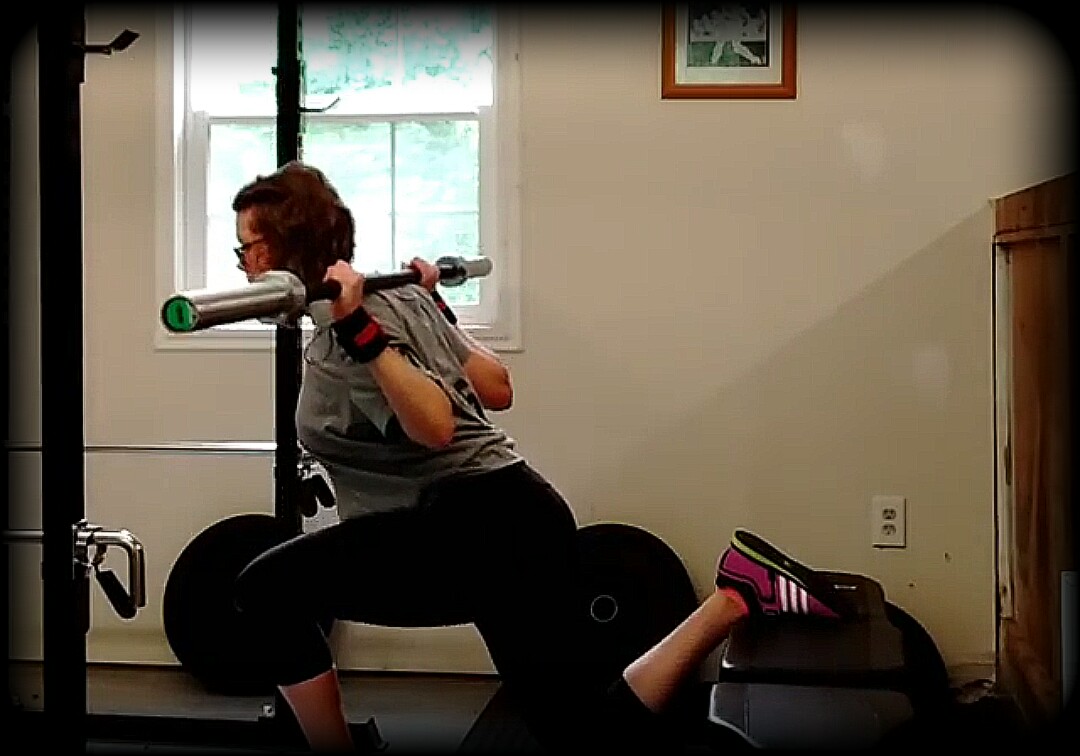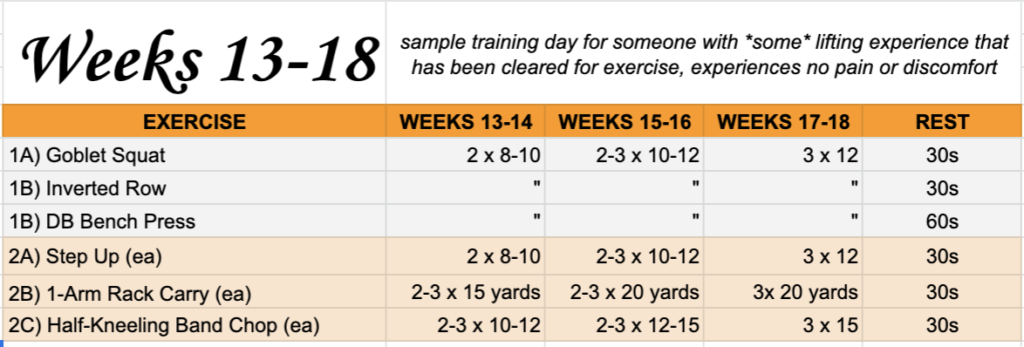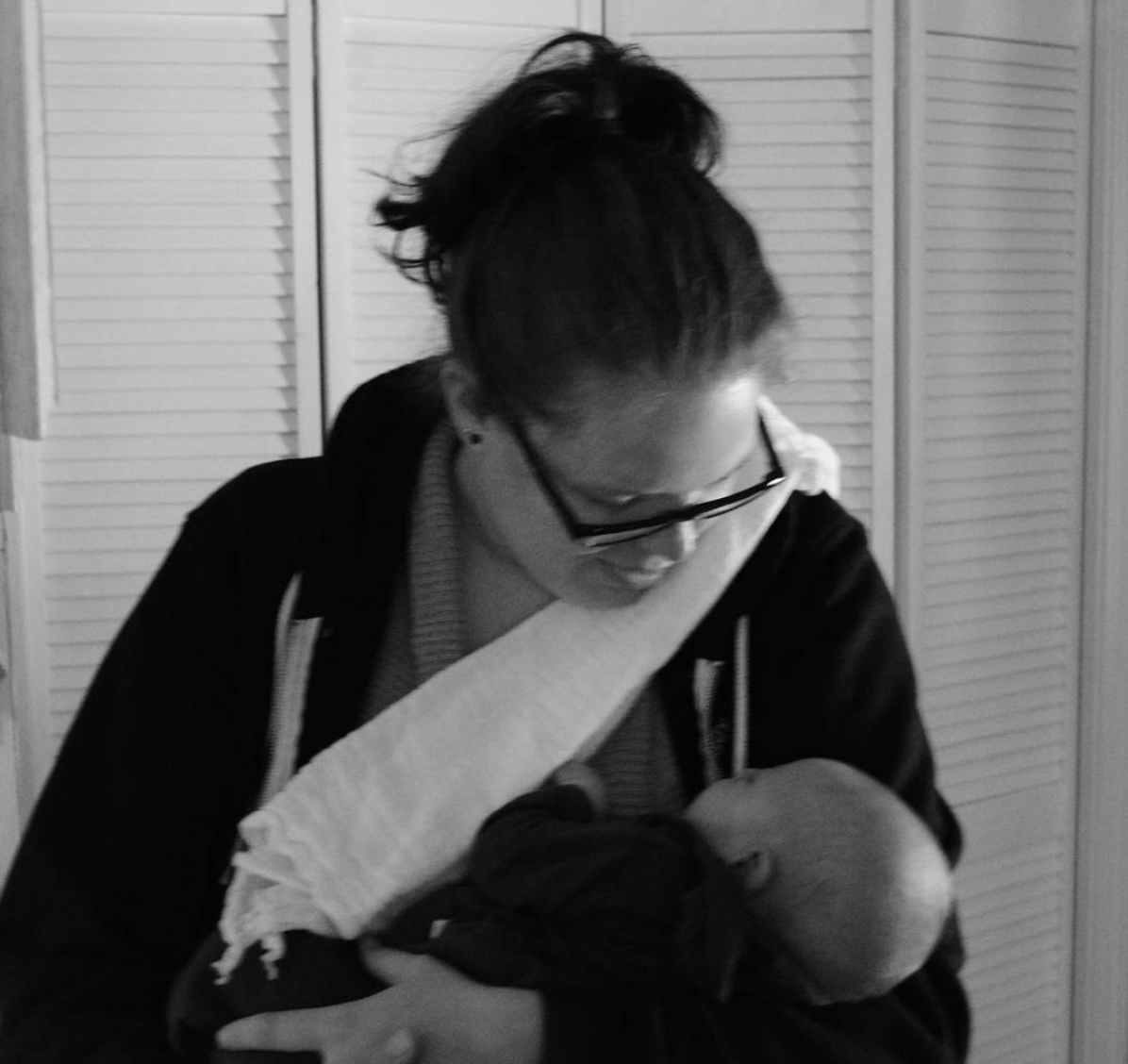
Access weeks 0-6 here.
You made it! It’s week 7 or 8 or maybe 9 after you delivered your sweet (sour) angelic (demonic) child into the world. You’ve most likely been to see your OB/Gyn or general practitioner who has “cleared” you to continue skating but you’re still wondering:
HOW DO I ACTUALLY RETURN TO SKATING?
The most important thing for you to know in this stage of postpartum is that your 6 or 8-week check-up is not gospel. Just because your GP or OB/Gyn “cleared” you to skate doesn’t mean that you’re actually ready. The typical postpartum check-up with a doctor merely assesses how your wounds are healing post-pregnancy:
- Has the open wound in your uterus where the placenta was attached stopped bleeding and started to heal?
- Has any tearing or stitches started to heal appropriately?
- Is your c-section scar healing as it should be?
And, while all of these things are important, those types of healing are the very lowest rung on the ladder of recovery that you need to climb. Aside from knowing that those things are healing as they should be, we also need to be concerned with what our body can do comfortably, whether or not our core can actually turn on and support dynamic, athletic movement, and if we’ve been preparing our body to get back on skates.
OB/Gyns and general practitioners are great. But they are not answering those (sometimes) more important questions about how your body functions NOW.
This article is going to assume that you are currently in a place where you are ready, able, and excited to return to training and skating postpartum and that you (mostly) have the above list managed in a healthy way. And the information is heavily pulled from the certification programs I went through to work with pregnant and postpartum folks from both Girls Gone Strong and Brianna Battles.
With all the disclaimers out of the way, let’s talk about your timeline to returning.
Oh, wait. One last disclaimer. Every pregnancy, delivery, and the postpartum period is different for every birth. It’s important to keep in mind that you need to be flexible when it comes to following this timeline. There may be points at which you can move more quickly but there are likely also points that you’ll need to slow down.
Approach your postpartum training with INTENTION now so that you can approach it with INTENSITY in a few months.
Weeks 7-18 Postpartum
We’re going to call this the “return to exercise” phase. It’s here! It’s finally happening! You may have felt well enough and be appropriately cleared by your Pelvic Floor Physical Therapist to begin gentle exercise earlier than this (in which case, go you!) but if you’re rehabbing on your own, this the time we want to start looking at a gradual return to exercise. In other words, the big focus here is to begin performing exercises that are “easier” and feel comfortable and safe while gradually progressing to more difficult exercises.
In other other words, you can perform the exercises without:
- without leaking urine
- feeling heaviness or bulging in the pelvic floor
- experiencing physical pain
- massive amounts of fear (this the mental piece, just avoid exercises that freak you out for now)
Again, speeding through any of these phases DOES NOT equate to getting back on skate sooner. However, during weeks 7-18 the goal can start to morph into being primarily about training to return to skating.
It’s also a really important time to decide if you’re really ready to return to skates. You may find that training for aerobic and strength improvements is difficult due to time constraints or fatigue and jumping back into skating isn’t in the cards yet. You may find that, once you start finding ways to train again, your body (and brain) are raring to go back.
RESPECT THIS PROCESS. Whatever it looks like for you. Roller derby will always be there when you’re ready for it. There’s no need to rush. Okay? Okay.
Here’s what you can do to continue rebuilding your core function, get back into training, and finally get your skates back on safely:
1) Get those pelvic floor muscles back online
You may be recognizing a theme in the focus of these articles wherein I NEVER SHUT UP ABOUT YOUR PELVIC FLOOR. But your pelvic floor is the bottom of your core canister and was greatly impacted by pregnancy and delivery. If we want to do dynamic movement like squatting or skating or blocking or jamming, we need to be working through active recovery of these muscles.
It’s common for folks that are still in early postpartum to not have great control of their pelvic floor. This may be the case for various reasons but that lack of control can impact how quickly and safely you’re able to return to lifting and skating. You may not even have symptoms of pelvic floor dysfunction but perhaps you still:
• lack a strong, effective contraction when you cough or sneeze
• can’t engage and hold a pelvic floor contraction and/or can’t relax one
• lose tension in exercises that require cross-body connections (that transfer station thing again)
The connection breath I mentioned in the first article should still be a part of your everyday activity even if you can only squeeze it while sitting in the car or at your desk or after lying down in bed at night.
And, again, if you haven’t seen a pelvic floor physical therapist, try to get an appointment with one to see where your specific dysfunction might be or if you even have one at all.
2) Work on your breathing pattern.
Another reason why the connection breath is an important foundation for prenatal and postpartum training is because the way that you breathe matters. There are myriad breathing patterns that, when used postpartum, will put too much pressure on the weakened parts of your core (like your linea alba and pelvic floor).
Most folks, when first taught to lift or brace their core, automatically hold their breath to create the intrabdominal pressure needed to lift a heavy thing or take a big hip. This isn’t bad, necessarily, but it’s not the best practice for a postpartum body. The biggest keys to our breathing patterns are:
• that they occur circumferentially by expanding through the rib cage rather than just the upper chest or abdomen
• we use specific breathing patterns to create tension in our core that doesn’t increase pressure on weak areas
A lot of postpartum people aren’t breathing optimally because of the pressure to get the “pre-baby” body back. There’s a tendency to “suck it in” all the time which never allows the core muscles to relax and doesn’t take them through their full functional range. Breathe into and expand your whole torso, relaxing your pelvic floor on the exhale and contracting it on the inhale.
This breathing pattern gets carried into exercise as we make sure that we are exhaling THROUGH the most difficult part of an exercise and inhaling through the rest. (For example, in a squat you would inhale on the way down and exhale on the way up to create a bracing effect without producing too much intraabdominal pressure.)
3) Increase strength through the core muscles.
Since there’s been a significant change to your core muscles, it makes sense to target them in a way that we normally might not in our pre-baby training. When we’re easing into core training postpartum, the best approach is often to start with isolated core exercises FIRST, then move into more “functional” core work later. This usually looks like decreased resistance or difficulty in the beginning and increasing it as you feel able to.
A lot of the exercises that I program for my non-postpartum clients and their core work are the same ones that I would encourage my early postpartum clients to use with a few adjustments:
Bird Dog — start by moving each limb individually, so instead of opposing arm and leg up first you would raise your right arm, then your left leg, then your left arm, then your right leg. As that becomes more comfortable, you can move into a traditional bird dog.
Dead Bug — start with just a knees bent leg lower (the linked video goes through several easy regression) and work up to a traditional dead bug with arms and legs working in counterpoint.
Palloff Press — start by just holding a palloff position for 3-5s and working through your breathing patterns. You can increase the difficulty (when you’re ready) by extending the time of your hold or moving into a traditional palloff press.
Planks — begin by doing planks in a bear (or baby!) crawl position; having your knees bent helps avoid a lot of intense pressure through the abdomen. When that feels comfortable and safe you can progress to incline planks or full planks.
Don’t forget your new breathing patterns! And absolutely don’t progress until the exercise feels comfortable and safe at your current modification level.
4) Get back to training with simple, functional movements.
No one probably ever told you that lugging around a baby (and all of the things that come with them) is a workout in and of itself. When we first get back to training, we want to make sure that we focus on exercises that will have the most impact on our strength during regular, everyday activities. The good news is that those exercises will help you regain strength for skating. The not-so-good news is that you won’t be doing skater jumps quite yet.
A lot of what you’ll do when you get to the gym depends on your overall goal (probably getting back to skates, though, amirite?) but there are definitely things you want to pay attention to:
• How is your breathing, core, and alignment in these exercises?
• Do you have full control of the movement?
• Can you comfortably add load or increase difficulty?
• Testing easier modification of an exercise before diving into a more difficult one (bodyweight squats THEN goblet squats THEN back squats)
• Improving aerobic fitness without increasing fatigue levels (start with lower impact, less often aerobic work then adjust from there)
• How does this training impact your sleep, appetite, mood, fatigue?
While you may desperately want to get back to skates (I get it, I do!) this is the time to figure out what your body is capable of handling during this stage of your life and RESPECTING THAT. Remember, intention now and intensity later.
SAMPLE PROGRAM: Weeks 7-12
SAMPLE PROGRAM: Weeks 13-18

Weeks 19-42 will be covered here.
Want More?
Join The DERBY, BABY! Facebook Group
It’s a FREE roller derby community created and sustained specifically for pregnant and post-partum roller derby athletes.
The goal is to provide a space for skaters to get evidence-based exercise and training advice to return to skating as quickly and safely as possible. Everyone’s journey is different but I promise that we can all get there.
ANSWER THE QUESTIONS!


